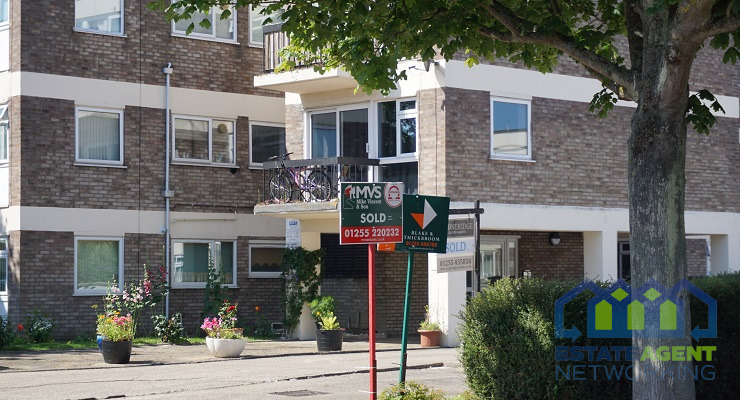What You Need to Know When Designing a Logo for Your Real Estate Business
Although the real estate industry is massive and has many opportunities for investors and businesses, there’s also a lot of competition. With so many real estate companies vying for the same properties, you must do whatever it takes to differentiate your brand, so it stands apart. One of the simplest options is to create a compelling, eye-catching logo.
However, if you haven’t created a logo before, you may not know what it takes to build one from scratch. Fortunately, with these six considerations, you can go from a single idea to a logo that will help you land more clients.
Step One: Consider Your Target Audience
The real estate industry is comprised of buyers, sellers, tenants, and financiers. As a real estate business, you’re likely focused on one of those groups, even if you work with people in each sector.
For example, perhaps you have relationships with Realtors to find single-family homes for reselling or rental income. Or, maybe you work with investors to fund new development projects.
So, your logo should reflect your target audience. If you’re working with investors, perhaps your logo should represent stability and trust. If you’re working with tenants and Realtors, you want the logo to be more friendly and humanizing.
If necessary, you might want to talk with your target audience to see what elements they value most about your business. Then, distill those responses into a few words and let those dictate the core elements of your logo. From there, you can stay focused and ensure that your logo will connect with potential customers.
Step Two: Look at Other Real Estate Logos
Once you know the direction your logo will take, you should pay attention to what other real estate businesses are doing. Look at companies that offer similar services so you can determine which elements they’re using. Then, you can figure out how to differentiate your brand.
Researching other logos is crucial because that’s the only way to ensure your logo will stand out. Otherwise, you may design a logo that looks similar to another business by accident. In a worst-case scenario, that company may force you to stop using your branding materials, putting you back at square one.
Another advantage of researching the competition is seeing what your business offers that other companies don’t. For example, maybe you provide personalized services to your clients. Or, perhaps you have a streamlined process that helps clients close deals faster. Knowing these details allows you to incorporate them into your logo and other branding materials.
Step Three: Pay Attention to Your Font Selection
There are thousands of font options available, each promoting a different message about your business. While these connotations are not set in stone, here are some common implications of various font types.
• Script Fonts – Because these fonts look fancy, they’re often reserved for luxury and style brands. So, if you cater to wealthy clients and manage high-end properties, you might want to incorporate a script font. Be aware of flourishes and extra elements, too, as they can make some letters or words harder to read.
• Serif Fonts – A serif is a little tail at the end of the tips of letters. Serifed fonts have a classical, timeless look, like Times New Roman. So, using a serif font can make your business look official and experienced.
• Sans-Serif Font – As you might imagine, a sans-serif font does not have a tail. These fonts look more modern and progressive. If you’re a new business or always looking to the future, a sans-serif font can provide the right connotation.
Step Four: Look at Color Options
Just as the font you choose can change your logo’s meaning, so can the color. Understanding a little color theory can help you craft a high-quality real estate logo that will get results. A quick online search shows many logos that use blue, red, and black as their primary colors. However, don’t feel limited by this selection. Here is what you can expect from using multiple colors like:
• Blue – This hue is comforting and relaxing and can signify trust. So, it makes sense that many real estate businesses use blue, especially those focusing on single-family homes.
• Red – Red is a passionate color, but it’s also associated with real estate (think Remax, Redfin, and even For Sale signs). Red is bold, so it catches your audience’s attention. Typically, red works well for companies that focus on being aggressive with real estate deals and getting them done efficiently.
• Black and White – These colors are mostly neutral, so they work for fonts and other neutral elements. When designing your logo, it helps to ensure it looks good in black and white as well as in color.
• Green – Green is the color of money, so it’s often used for financial businesses (i.e., Fidelity, H&R Block, Country Financial). If you’re focused on the investment side of real estate, it makes sense to incorporate green.
Step Five: Pay Attention to Your Logo Shape
Logos typically fall into one of three categories – text, abstract, and icon. A text logo just has the name of the company and potentially a slogan. Examples can include Coca-Cola or The Gap.
Abstract logos use a graphic or an image that may or may not represent something about the business. These logos are a bit harder to design because they’re not very straightforward. However, some famous examples include Pepsi and Chase.
Finally, an icon logo uses a graphic that relates to the company directly. So, for real estate, it could be a house or an office building. If you focus on land and development, you can include construction machinery or a building frame.
Overall, logo shapes hold meaning because they provide a subconscious feeling about your brand. For example, if you have a geometric logo, clients will assume you have rigid processes and do things “by the book.” However, if your logo shape is round or freeform, it can give a feeling of flexibility.
As a real estate business, your logo should feel stable and reliable. So, soft and curvy shapes may give clients the wrong ideas. Similarly, if you use a graphic of a house, clients may not come to you for commercial properties, and vice versa.
Step Six: Test Your Logo
Once you have each logo component finished and fleshed out, you need to see how your potential clients react. If possible, design multiple logos and solicit responses from existing customers to see which ones they like the best. Have respondents say which pieces they like the most and why. From there, you can make tweaks and adjust your logo until it’s perfect.
While there are many elements to pay attention to when running a real estate business, you can’t neglect your company’s logo. This one piece can impact everything from your marketing materials to how many clients you get. So, it’s imperative that you get it right.








